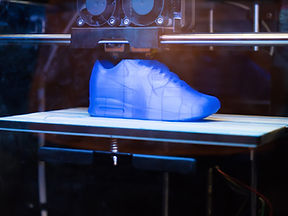

PLA

Polylactic Acid (PLA) filament is an eco-friendly, thermoplastic polyester made from renewable sources like corn, Soy or sugar cane. Known for its biodegradability under specific conditions, PLA boasts impressive mechanical strength, making it an ideal choice for various applications in 3D printing and manufacturing. Whether you're a hobbyist or a professional, PLA provides a sustainable option without compromising on quality. Explore the benefits of using PLA filament for your next project!
PLA also comes in various reinforced forms such as Carbon Fiber, Metal and Wood.
PETG

PETG filament, also known as Polyethylene Terephthalate Glycol, is a co-polyester known for its durability and ease of use. The G in PETG, stands for glycol-modified, which makes the end product clear, having glass-like visual properties. It is often described as the “best of both worlds” because it has the rigidity and mechanical properties of ABS but with less of the drawbacks
ABS/ASA

ABS stands for Acrylonitrile Butadiene Styrene. ABS is a thermoplastic material commonly used for 3D printing. to PLA, ABS has more desirable mechanical properties and is also more durable, temperature-resistant, and lightweight.
ASA filament (acrylonitrile styrene acrylate) is the perfect all-purpose 3D printing thermoplastic, suitable for many different applications. It has a similar chemical makeup to ABS plastic but offers three improvements: better mechanical properties, superior aesthetics and it's UV resistant.
TPU

TPU, or thermoplastic polyurethane, is a type of thermoplastic elastomer (TPE) commonly used by manufacturers in the automotive, transportation, aerospace, sporting goods, and medical device industries. TPU combines the high durability of plastic parts with the elasticity of rubber parts, making TPU ideal for applications where it needs to be repeatedly bent or compressed.
Due to its elasticity, TPU is often used as an impact modifier for products like helmets, protective packaging, anti-vibration products, and gaskets or seals. TPU also has excellent abrasion resistance and is relied upon in high friction or environments like car interiors or for electrical cables and insulators. For applications in these industries where oil is often present, TPU can be relied upon for its resistance to oil stains as well.
Nylon/PC/PAHT

Nylon is a popular synthetic polymer mainly used for industrial applications. Nylon is the heavyweight champion of 3D printing filaments. Compared to most other FIlaments it is unbeatable in the field of strength, flexibility and durability.
Polycarbonate (PC) is a high-performance, synthetic filament used for fused filament fabrication 3D printing. It is a recyclable material that can be engineered to meet specific application or processing requirements, such as low warping. It’s toughness and rigidity make it an ideal material for higher demanding 3D-printing applications.
PAHT-CF filament is a cutting-edge material that combines Polyamide (PA) with carbon fiber, creating a powerful blend of strength, durability, and flexibility.
